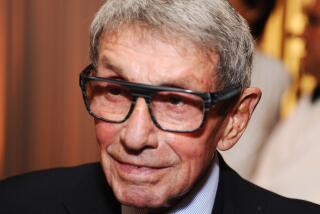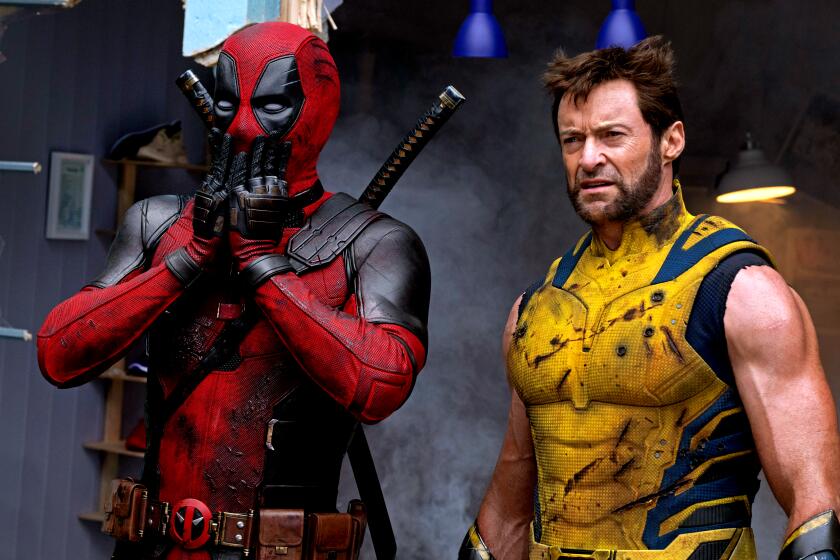Classic Hollywood: For filmmakers, 1962 was a very good year
To quote the famous Don Henley song, 1962 was the end of the innocence.
In that pivotal year, John F. Kennedy was the handsome young president in the White House with his glamorous wife Jackie and their two adorable young children. John Glenn became the first American astronaut to circle the Earth The top songs of the year included Ray Charles’ “I Can’t Stop Loving You” and Chubby Checker’s “The Twist.” The CBS comedy “The Beverly Hillbillies” was the No. 1 series on television.
But more disturbing forces were at work in the culture and real life. In 1962, Stanley Kubrick released his controversial version of Vladimir Nabokov’s “Lolita,” and John Frankenheimer his charged political thriller “The Manchurian Candidate.”
The country itself was mired in the Cold War, and fear of a nuclear war with the Soviet Union over the Cuban Missile Crisis paralyzed the country and the world for 13 days that October.
Violence erupted between segregationists and federal and state forces on the campus of the University of Mississippi when African American Army vet James Meredith enrolled at Ole Miss. And the buildup of troops in Vietnam was begun by Kennedy, swelling to 9,000 troops by year’s end.
With so much happening during that watershed year, it’s not surprising that many filmmakers have made 1962 a focal point of their movies.
“It’s like the country is in a sea of change and ’62 is the high tide,” said Theodore Melfi, director and co-writer of the 2016 best picture Oscar nominee “Hidden Figures,” which is set in that period.
George Lucas’ nostalgic 1973 classic “American Graffiti” even asked, “Where were you in ’62?”
Among the films set in 1962 are John Landis’ 1978 comedy “National Lampoon’s Animal House,” John Waters’ 1988 comedy “Hairspray” and the 2007 musical version, Joe Dante’s 1993 comedy “Matinee,” Tony Richardson’s 1994 drama “Blue Sky,” David Mickey Evans’ 1993 baseball tale “The Sandlot” and Tom Ford’s 2009 drama “A Single Man.”
More recently: Guillermo del Toro’s 2017 best picture Oscar winner “The Shape of Water” and Peter Farrelly’s racially hinged drama “Green Book” set their stories in 1962. “First Man,” a biopic about astronaut Neil Armstrong, is set in the 1960s, culminating in the Apollo moon landing of 1969.
“The ’60s at that point were really a continuation of the ’50s,” said Chris Matthews, author and host of MSNBC’s “Hardball With Chris Matthews.”
The political commentator, who turned 17 in 1962, recalled the world of cars, football and pop music that Lucas captured in “American Graffiti.”
“In September 1962, I had my parents’ ’58 Chevy station wagon,” recalled Matthews. “I inherited it. I was going to a football game with a friend at mine. There were girls. The music playing … was ‘Sherry’ — the Four Seasons’ big hit.”
Everything, he added, “was so positive or forward-looking. We were making changes on civil rights. Kennedy was fighting [segregationists] down in Mississippi. Kennedy was fighting the Soviets in the Cuban Missile Crisis.”
Though “Hidden Figures,” which was nominated for three Oscars, and Golden Globe nominee “Green Book” are crowd pleasers, they don’t offer rose-colored-glasses depictions of America in 1962.
“It’s the end of an era, but to be clear, it wasn’t an era that was all good,” said Farrelly, the director and co-writer of “Green Book.”
In the film, Viggo Mortensen plays a tough and racist New York nightclub bouncer, Tony Lip, who is hired to drive and protect African American jazz musician Don Shirley (Mahershala Ali) on his concert tour of the Deep South. The green book refers to the guide that lists the hotels that African Americans were allowed to stay in in the segregated South.
“It was a worse time for black Americans,” noted Farrelly. “There’s a great moment in my movie where the two worlds meet, when they are in the car and the happy couple pulls up next to them somewhere down South. They looked over at Tony Lip driving Dr. Shirley and they can’t believe what they’re seeing. They are staring like ‘this is horrible, that shouldn’t be happening.’”
Still, Farrelly remembered there was a hopefulness in the U.S. when Kennedy was in office “that died the day he got killed and really sunk when Martin Luther King and Robert F. Kennedy went down five years later,” said the filmmaker, who was in first grade when President Kennedy was assassinated.
“First Man” screenwriter Josh Singer, who won an Oscar for 2015’s “Spotlight,” said that he and director Damien Chazelle pushed back on the hope and innocence ideals of the time. “So many of these space movies are so triumphant,” he noted. “And it was really much harder than that.”
In fact, he said, “even JFK’s decision to go to the moon was a political gambit. It was basically a response to the fact that the Russians had just made him look horrible on the Bay of Pigs and had just put Yuri Gagarin up in space and how were we going to beat them? It wasn’t just the noble optimism that people tend to associate [with Kennedy’s decision to go to the moon]. I wouldn’t be Pollyanna-ish about it.”
Though these movies are set in the past, they inevitably reflect the present.
“Hidden Figures” chronicles the story of three African American women (Taraji P. Henson, Octavia Spencer and Janelle Monáe) working at NASA who were pivotal behind Glenn’s space flight. These women, though, had to deal with prejudice on two fronts: they were women working in a male-dominated society and they were black.
“Everything is a mirror of what is going on in the world at the time you’re shooting it,” said director Melfi. “Women are still fighting for equal rights and pay.”
And racism is still prevalent. “It just looks different,” he noted.
Going back to the past, he said, “you can literally see the impact of showing people history and showing people where we were and what was achieved through the worst of circumstances. Through the worst of circumstances Katherine Johnson, Dorothy Vaughan and Mary Jackson achieved amazing results and amazing things for the country.”
“Hidden Figures,” said film historian and author Joseph McBride “is a good example of what you can do when you make a historical film — if you reveal something people don’t know about that time. There’s a great scene where John Glenn asks [Katherine Johnson] to calculate things and he waits for her approval before he goes up in space.”
When asked how “First Man” comments on today, Singer replied: “I think our leadership today sucks. I don’t think we have anyone who’s going to marshal the forces.”
Singer quoted Kennedy’s famous line from his inauguration speech: “Ask not what your country can do for you — ask what you can do for your country.”
By contrast, he noted, now we have leadership that makes those promises and says, “‘We’re going to give you the moon’ and then gives us nothing. So, you know in that way, it’s a sharp commentary on today. But unlike other movies, we’re not going to make that commentary for you. You’ve got to figure that out for yourself.”
More to Read
Only good movies
Get the Indie Focus newsletter, Mark Olsen's weekly guide to the world of cinema.
You may occasionally receive promotional content from the Los Angeles Times.











